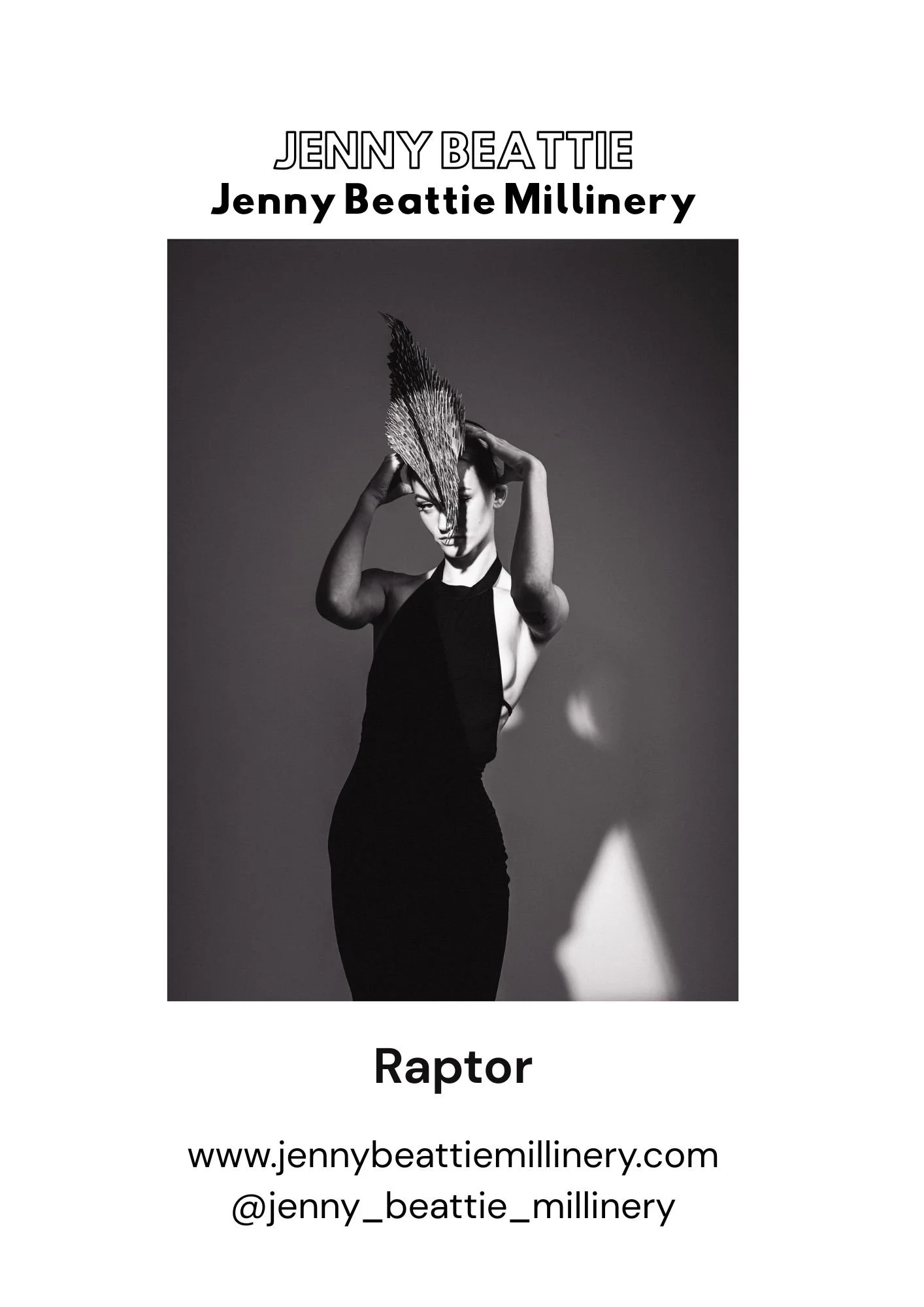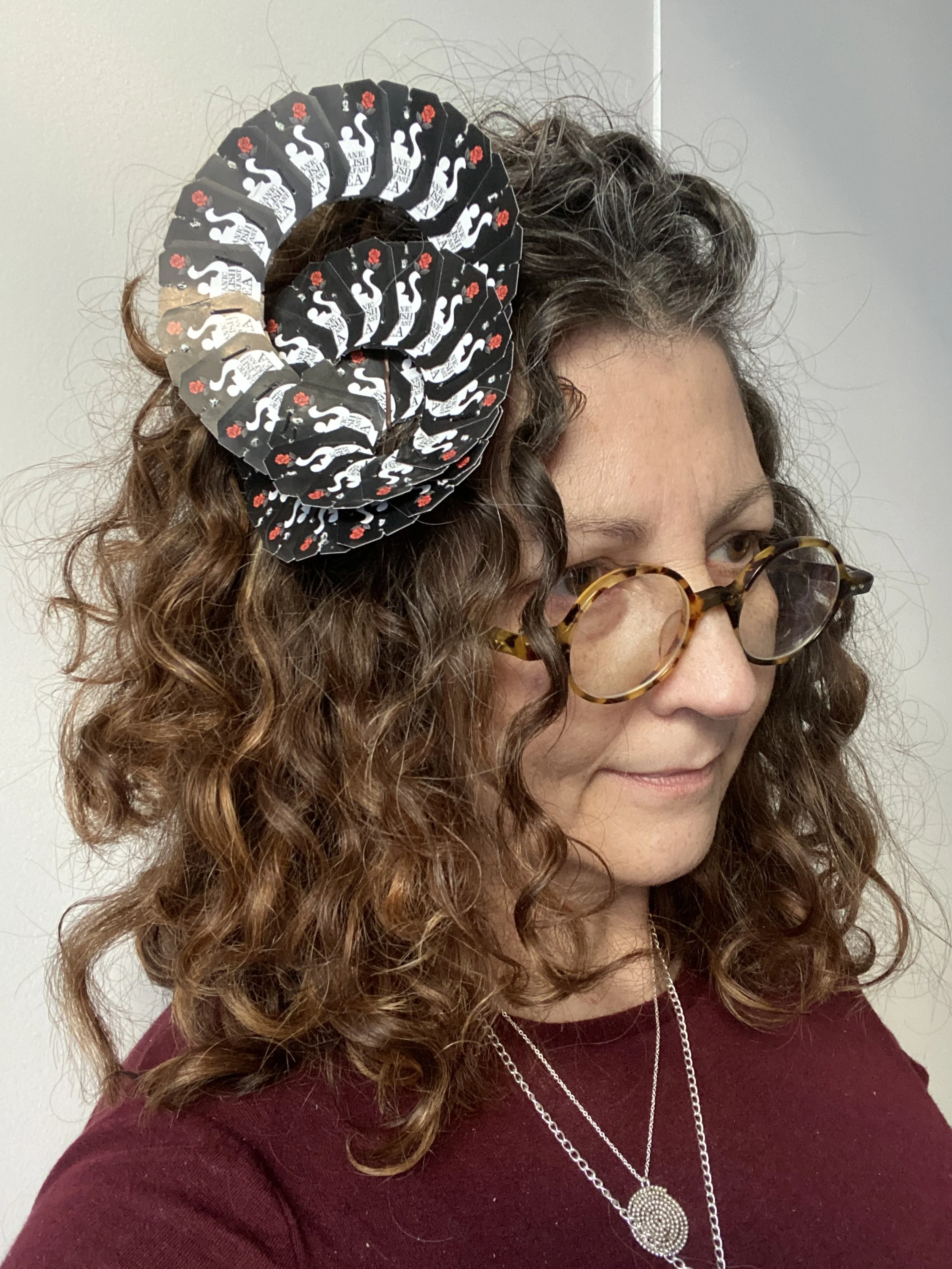“Raptor is one of my ‘Trash Hats’. It was made from Whiskas’ cat food pouches that I spotted in my sister’s kitchen; bright, shiny pink material, both plasticky and metallic. The moment I saw them I knew instantly that I wanted to use the packaging to make a hat. With unusual materials, come different challenges.
For me, it’s all about transformation so I didn’t want images of cats to give away what the hat was made of. I played with different ideas and tested how the materials changed with different methods of manipulation. I liked the experiments where I folded the materials best: the pouches took the fold nicely but they had a kind of gentle bounce in the fabric of the triangle. But I was still having problems: it didn’t matter how I folded the material, bits of cats still showed through. In the end, I had to make the tough decision to lose most of the pink (apart from the off centre stripe) and use the silvery inside of the pouches. I used a folding method I’d seen people doing with empty crisp packets! I’ve always loved repetition, so the structure was built up simply by repeating the triangles. I cut and folded and sewed through the pandemic. The more I made, the more they felt like scales so the fierce design of this sculptural headpiece developed through the idea of a dragon, or dinosaur.
”
“Materials have always been a starting point for my process and over the last few years, I’ve been making ‘Trash Hats’ from found materials, waste, or packaging. I’ve always wanted my hats to tell stories and that starts because they’ve already had another life! My work thrives on the idea that traditional skills and techniques can co-exist in a modern world and that I can combine them to produce striking and wearable art for the head. I want to transform the rubbish into something striking and beautiful. It’s only rubbish if you can’t find another purpose for it.
Making one hat this way isn’t sustainable or a solution to our waste crisis but I hope that it makes people think and that it starts conversation about where our materials come from and where they go when they are thrown away. The very simple fact is that there is no ‘away,’ it has to go somewhere. My sister was saving these pouches to take to a collection point because most local centres can’t recycle them. Unless people go to the trouble of finding a collection point near them, most of these pet food pouches will go to landfill. UK Pet Food estimate that there are 12.5 million cats in the UK: two pouches a day for each cat … think about that for a moment.”
Jenny makes bespoke headpieces for individuals, fashion, and theatre. With a background in sewing and a sculpture degree, she has been a maker her whole life.
She discovered a love of millinery during more than a decade of living in Bangkok, Thailand, where she began making headpieces for her community. These early hats were witty and silly but it was here that she saw that hats could tell stories and be more than just something beautiful.
Materials have always been important to Jenny; sometimes coming as the first element of a hat. She loves fine millinery materials as her 2020 HATalk prize winning hat, The Haberdasher demonstrates. But she has a growing reputation for transforming discarded, leftover or unusual materials into sculptures for the head. Her first of these ‘Trash Hats’ was ‘Starling Murmuration’ which was shortlisted in the ‘’Technique and ‘Wearability’ categories in the London Hat Week 2020 millinery competition.
Jenny’s work thrives on the idea that traditional skills and techniques can co-exist in a modern world and that she can combine them to produce striking and wearable art for the head.




